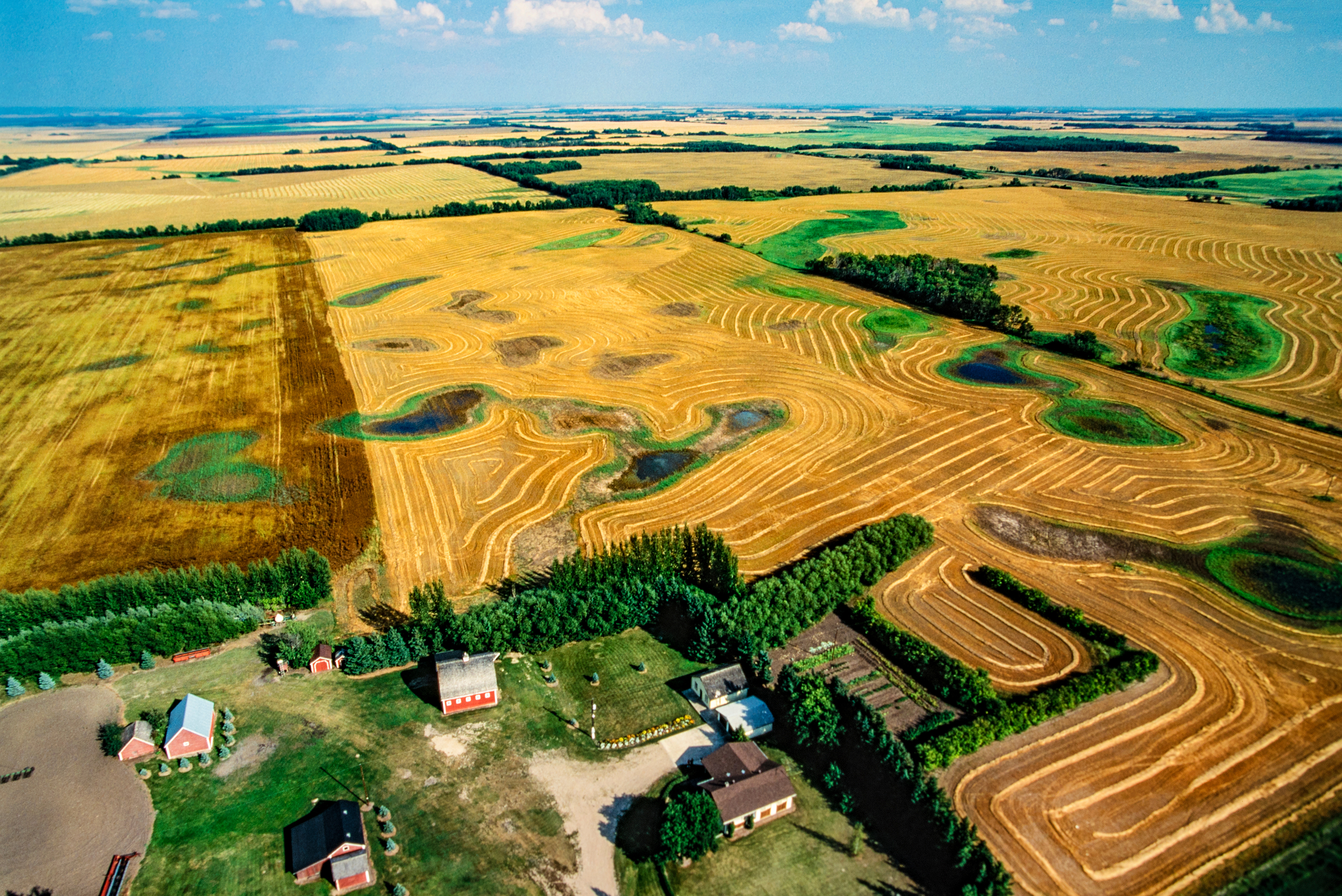Prairie Provinces are the three Canadian provinces of Alberta, Saskatchewan, and Manitoba. They make up a large region that borders Montana, North Dakota, and Minnesota. The provinces cover a total of 757,023 square miles (1,960,681 square kilometers), or about a fifth of Canada.

The Prairie Provinces have about four-fifths of Canada’s farmland and provide much of the nation’s cattle and grain. The region also has rich deposits of petroleum and many other minerals. Several cities in Alberta and Manitoba are important manufacturing centers.
About a fifth of Canada’s people live in the Prairie Provinces. The 2021 Canadian census reported that the region had a population of 6,737,293, of whom about four-fifths lived in urban areas. The population included about 315,000 First Nations people, or about two-fifths of First Nations people in Canada. The largest cities of the Prairie Provinces are, in order of size, Calgary, Alberta; Edmonton, Alberta; Winnipeg, Manitoba; Saskatoon, Saskatchewan; and Regina, Saskatchewan.
Economy.
A majority of the income of the Prairie Provinces comes from industries that provide services rather than produce goods. However, agriculture and mining are more important to the region than they are to Canada as a whole.
Prairie farmers raise about nine-tenths of Canada’s barley, wheat, and oats, and about three-fourths of the beef cattle. The sale of beef cattle provides about a fifth of the region’s farm income. Other major farm products include canola, dairy goods, hogs, ornamental plants, peas, potatoes, and poultry.
The Prairie Provinces produce most of Canada’s coal, natural gas and petroleum. The majority of coal, gas, and oil produced in the region comes from Alberta. Saskatchewan is the largest potash producer in the world. Thompson, Manitoba, ranks as one of the world’s chief centers of nickel production. Other mined products of the Prairie Provinces include copper, gold, quartz, salt, sand and gravel, sodium sulfate, sulfur, uranium, and zinc.
The production of chemicals and food and beverage products are the chief manufacturing activities. Other top manufactured goods include fabricated metal products, machinery, and wood products.
Commercial fisheries operate on a number of lakes in the Prairie Provinces. Fur farmers and trappers of the region market valuable pelts. Airlines, highways, and railroads link the cities and towns of the Prairie Provinces. Ships carry cargo between Churchill, Manitoba, and Atlantic Ocean ports by way of Hudson Bay.
History.
A number of First Nations tribes lived in what are now the Prairie Provinces when European explorers first arrived there. Major tribes included the Assiniboine, Blackfoot, Chipewyan (also called Denesuline), and Cree.
The English explorer Sir Thomas Button and his crew were probably the first Europeans to see the region. In 1612, they sailed down the west coast of Hudson Bay and claimed the land for England. In 1670, King Charles II of England granted control of most of what are now the Prairie Provinces to the Hudson’s Bay Company of London, a fur-trading organization. The fur trade was the only important economic activity in the region for the next 200 years.
In 1869, the Hudson’s Bay Company sold the region to the newly formed Dominion of Canada. Manitoba became a province in 1870, when the Dominion of Canada took possession of the region. During the late 1800’s and early 1900’s, millions of people settled in the region. They came from eastern Canada, the United States, and such European areas as the United Kingdom, Germany, the Netherlands, Poland, Scandinavia, and Ukraine. Alberta and Saskatchewan became provinces in 1905.
See also the articles on each of the Prairie Provinces and their lists of “Related articles.”
